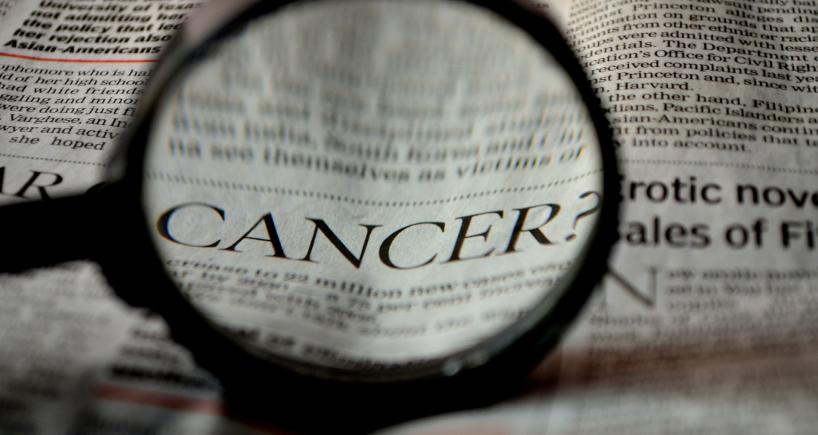
Oncology
Taking A Piece of Cancer Is No Piece of Cake!!!
Dr. Shubham Garg(IOSPL) Feb 02, 2021
 The only other thing, more difficult than suggesting a diagnosis of cancer, is the suggestion to take a piece of it.
What is a biopsy
Biopsy entails taking a small piece from the suspected site of disease to examine it under a microscope. This is basically a representative sample of the affected region for better understanding of the disease process. This is similar to eating a grape before buying a bunch to sample its taste.
Why do we need a biopsy?
The foremost reason for doing a biopsy is for the Confirmation of the disease. Even when a doctor strongly believes that you are suffering from cancer and all your blood reports and imaging studies are pointing towards cancer, a tissue diagnosis is required to confirm it. This is because there are many noncancerous conditions which can mimick cancers. Another important reason for confirmation of diagnosis is that the treatment that we start for cancer usually have many side effects and significant cost implications and you don’t want to start such expensive and morbid treatment without confirming it.
The other important reason why we need a biopsy is to understand what type of cancer it is as different type of cancers may have different treatment and we want to ensure that right treatment is started for the right type of disease.
Â
How do we do a biopsy?
The procedure of biopsy depends on the site of the disease. In case of an ulcer in the mouth or skin, we can easily take a chunk of the tissue by using a punch biopsy forceps after giving adequate anaesthesia. However, if the similar ulcer is in the stomach or inside the gut, we need to do a scopy to visualize it and take a biopsy. If the biopsy is to be done from a deep organ like the lung or liver then we need to use an imaging modality like ultrasound or CT scan to localize the disease and then do an image guided biopsy. Sometimes, the diseased area is small enough to be completely removed for biopsy itself and it is called as an excisional biopsy.
Whats a FNAC?
FNAC is short form of Fine Needle Aspiration Cytology and is a little different from biopsy. In biopsy we take a chunk of tissue whereas in an FNAC, we put in a fine needle and suck out (aspirate) some cells and place it on a slide to study them under a microscope. FNAC is less invasive then biopsy but then the yield of tissue is lesser than that of biopsy and you may end up doing a biopsy later on. However in some type of cancers like that of thyroid, FNAC is enough and biopsy is rarely required.
What are the risks of biopsy?
The most common risk of biopsy is that of bleeding from the biopsied site and therefore before biopsy most of the times a blood test (coagulation profile) is done that ensures that bleeding will stop spontaneously or not. The other commonest side effect is pain at the biopsy site or wherever the biopsy needle passes from. This is also tackled by giving appropriate painkillers. Most of the times biopsy is not done without the advice of your oncologist and most of the times they ensure that all safety boxes are ticked.
Most Important Question, does cancer spread more rapidly after a biopsy?
This is the biggest misconception that people have about getting a biopsy done. Biopsy doesn’t lead to increase in the rate of growth of tumor or explosion of tumor cells. It is just because a biopsy confirms your diagnosis of cancer and you become very conscious of the growth and believe that henceforth any growth that will happen will be secondary to the biopsy. Multiple studies have shown that biopsy if done properly doesn’t lead to spread of tumor.
Biopsy is a must before starting any cancer treatment as it just doesn’t confirm your disease but also guides our line of management.
Dr Shubham Garg
MS MCh Surgical Oncology, TMH Mumbai
Senior Consultant, Surgical Oncology
Fortis International Oncology Centre.
The only other thing, more difficult than suggesting a diagnosis of cancer, is the suggestion to take a piece of it.
What is a biopsy
Biopsy entails taking a small piece from the suspected site of disease to examine it under a microscope. This is basically a representative sample of the affected region for better understanding of the disease process. This is similar to eating a grape before buying a bunch to sample its taste.
Why do we need a biopsy?
The foremost reason for doing a biopsy is for the Confirmation of the disease. Even when a doctor strongly believes that you are suffering from cancer and all your blood reports and imaging studies are pointing towards cancer, a tissue diagnosis is required to confirm it. This is because there are many noncancerous conditions which can mimick cancers. Another important reason for confirmation of diagnosis is that the treatment that we start for cancer usually have many side effects and significant cost implications and you don’t want to start such expensive and morbid treatment without confirming it.
The other important reason why we need a biopsy is to understand what type of cancer it is as different type of cancers may have different treatment and we want to ensure that right treatment is started for the right type of disease.
Â
How do we do a biopsy?
The procedure of biopsy depends on the site of the disease. In case of an ulcer in the mouth or skin, we can easily take a chunk of the tissue by using a punch biopsy forceps after giving adequate anaesthesia. However, if the similar ulcer is in the stomach or inside the gut, we need to do a scopy to visualize it and take a biopsy. If the biopsy is to be done from a deep organ like the lung or liver then we need to use an imaging modality like ultrasound or CT scan to localize the disease and then do an image guided biopsy. Sometimes, the diseased area is small enough to be completely removed for biopsy itself and it is called as an excisional biopsy.
Whats a FNAC?
FNAC is short form of Fine Needle Aspiration Cytology and is a little different from biopsy. In biopsy we take a chunk of tissue whereas in an FNAC, we put in a fine needle and suck out (aspirate) some cells and place it on a slide to study them under a microscope. FNAC is less invasive then biopsy but then the yield of tissue is lesser than that of biopsy and you may end up doing a biopsy later on. However in some type of cancers like that of thyroid, FNAC is enough and biopsy is rarely required.
What are the risks of biopsy?
The most common risk of biopsy is that of bleeding from the biopsied site and therefore before biopsy most of the times a blood test (coagulation profile) is done that ensures that bleeding will stop spontaneously or not. The other commonest side effect is pain at the biopsy site or wherever the biopsy needle passes from. This is also tackled by giving appropriate painkillers. Most of the times biopsy is not done without the advice of your oncologist and most of the times they ensure that all safety boxes are ticked.
Most Important Question, does cancer spread more rapidly after a biopsy?
This is the biggest misconception that people have about getting a biopsy done. Biopsy doesn’t lead to increase in the rate of growth of tumor or explosion of tumor cells. It is just because a biopsy confirms your diagnosis of cancer and you become very conscious of the growth and believe that henceforth any growth that will happen will be secondary to the biopsy. Multiple studies have shown that biopsy if done properly doesn’t lead to spread of tumor.
Biopsy is a must before starting any cancer treatment as it just doesn’t confirm your disease but also guides our line of management.
Dr Shubham Garg
MS MCh Surgical Oncology, TMH Mumbai
Senior Consultant, Surgical Oncology
Fortis International Oncology Centre. Categories
Clear allMeet the doctor

Dr. Shubham Garg(IOSPL)
| Fortis Noida
- Oncology | Surgical Oncology
-
12 Years
-
1200



















